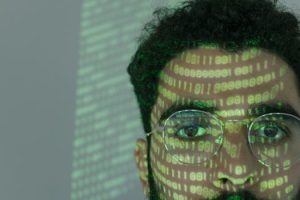Flipped Classrooms 2.0: AI-Powered Pre-Lesson Customization
If you’re an educator or have been following educational trends, you’ve probably heard of flipped classrooms. This innovative teaching method has been gaining popularity over the years, with many seeing positive results in student engagement and learning outcomes. However, as technology continues to advance, we are now looking at Flipped Classrooms 2.0 – the evolution of flipped classrooms with the use of AI-powered pre-lesson customization. In this article, we will explore this new version of flipped classrooms and how it can further enhance the learning experience for students.
Understanding Flipped Classrooms 2.0
First, let’s have a quick refresher on what flipped classrooms are. In traditional classrooms, students listen to lectures and take notes during class, and then do homework on their own. In flipped classrooms, this is inverted – students watch the lectures at home and come to class to do practical activities and have discussions with their peers and teacher.
Flipped Classrooms 2.0 takes this concept a step further by incorporating AI-powered pre-lesson customization. This means that instead of students watching the same lecture, the lesson is tailored to each student’s needs and learning style. The AI algorithms analyze the student’s progress and learning patterns and adjust the content and presentation of the lesson accordingly.
The Benefits of Flipped Classrooms 2.0
One of the main benefits of the flipped classroom approach is that it allows for a more personalized learning experience. With Flipped Classrooms 2.0, this personalization is taken to a whole new level. The AI algorithms can identify and fill gaps in a student’s understanding, suggest additional resources to help with difficult concepts, and provide real-time feedback to improve their learning. This not only enhances the learning experience for each student but can also improve learning outcomes.
Furthermore, Flipped Classrooms 2.0 can also help to keep students engaged and motivated. By having a customized lesson that caters to their needs and interests, students are more likely to stay focused and actively participate in class. This can also lead to improved attendance and a decrease in classroom distractions.
The Role of the Educator in Flipped Classrooms 2.0
Some may argue that with the rise of AI and technology, the role of the educator may become obsolete. However, this is not the case. In fact, the role of the educator becomes even more critical in Flipped Classrooms 2.0. With the use of AI, educators are now able to spend more time interacting with students and providing one-on-one support. They can also use the data collected by the AI algorithms to identify patterns and areas where their students may need additional support.
Add to this the fact that the flipped classroom approach allows for more group work and discussions, and educators can facilitate more meaningful and engaging learning experiences for their students.
Concerns and Considerations
Privacy and Data Management
One of the main concerns with the use of AI in education is privacy and data management. With Flipped Classrooms 2.0, it’s crucial to ensure that the data collected from students is securely managed and used only for educational purposes. Educators and institutions must also take steps to protect student privacy and comply with data protection laws.
Equity and Accessibility
Another consideration is equity and accessibility. With personalized lessons, there is a risk that students from lower-income or marginalized backgrounds may not have access to the same resources and technology needed to fully benefit from Flipped Classrooms 2.0. Educators must be mindful of this and ensure that all students have equal opportunities to succeed.
The Future of Flipped Classrooms
Flipped classroom approaches are continuously evolving, and Flipped Classrooms 2.0 is just one example of how technology can enhance the learning process. As AI and technology continue to advance, we can expect to see even more innovative approaches to education, further enhancing the learning experience for students.
Conclusion
In conclusion, Flipped Classrooms 2.0 with AI-powered pre-lesson customization is a game-changer in the world of education. With personalized and engaging lessons, students are more likely to be motivated and achieve better learning outcomes. However, it’s crucial to address concerns around privacy, equity, and access to ensure that every student can benefit from this innovative teaching method. Educators must embrace the use of technology and adapt to these changes to provide the best learning experience for their students.








